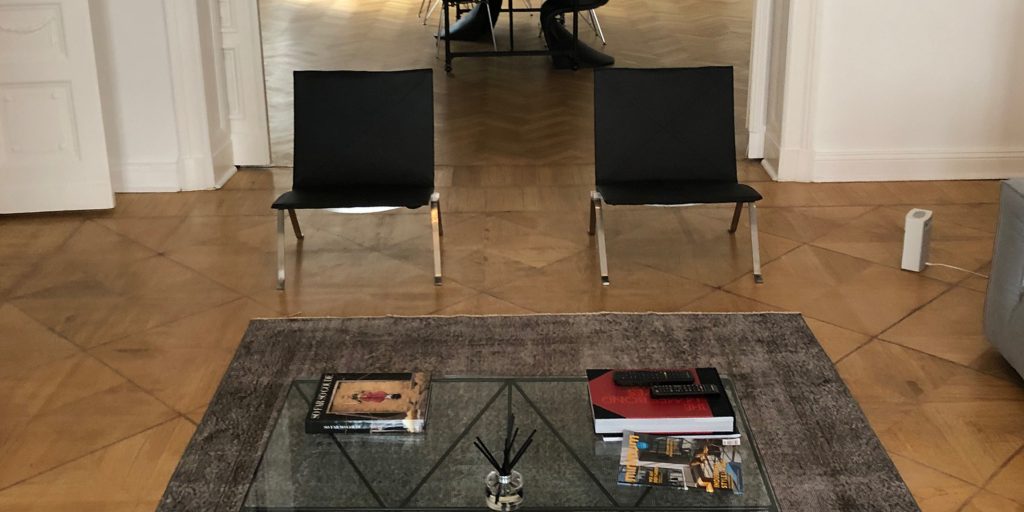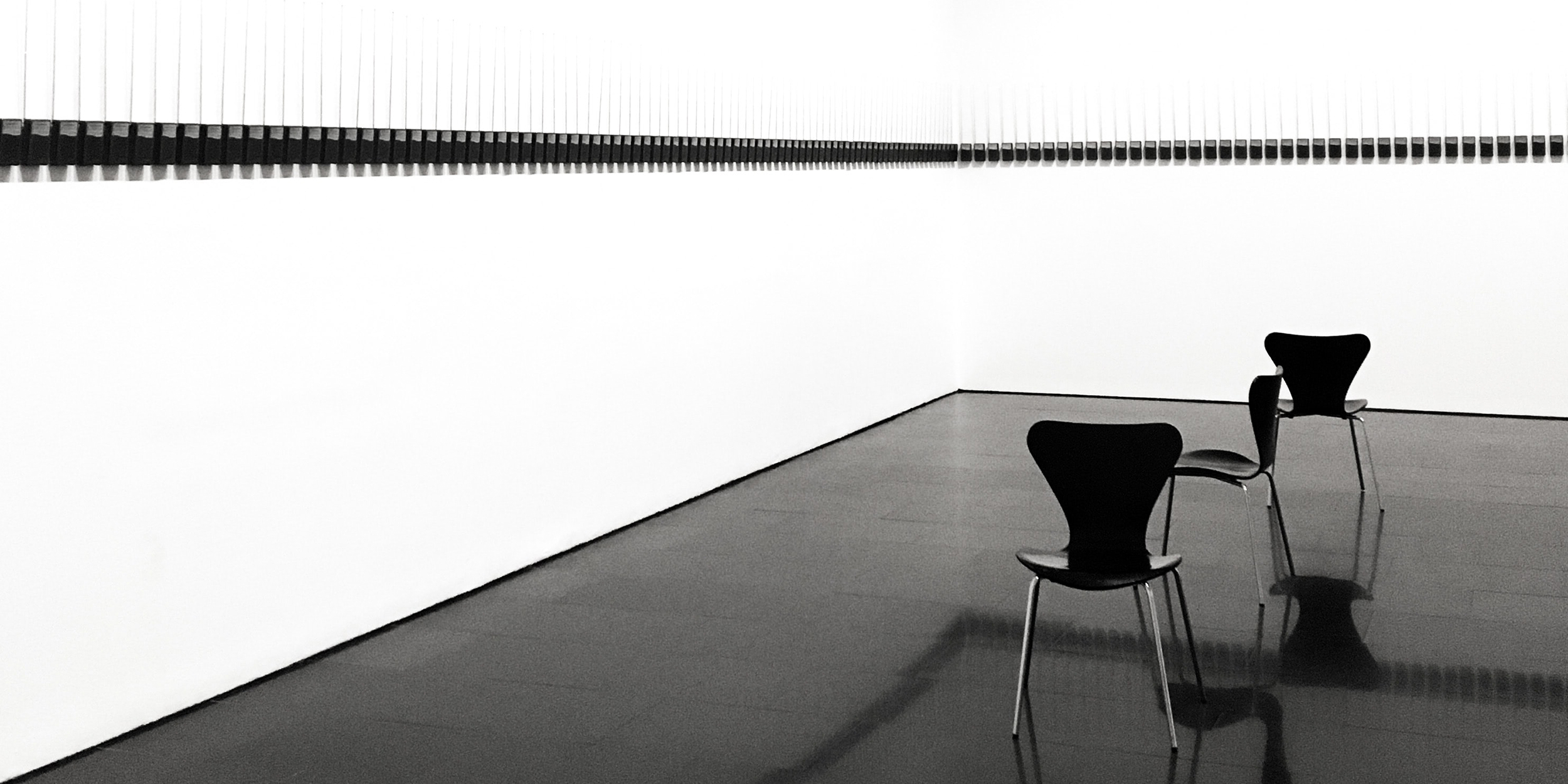Denmark is a small country that has always punched above its weight, quite literally during the Viking era! This ability of Danes to take the world by storm is most evident in the success of Danish designers.
In this article, we’ll share everything you need about Danish interior design and some examples of the most famous Danish interior designers of all time.
What Is Danish Interior Design?
From the late 1940s, Danish furniture designers, architects and artists began to make their mark internationally.
The most famous Danish designer, who was also an architect, designed and furnished the SAS Royal Hotel in Copenhagen in 1960, which is now known as the Radisson Blu Royal Hotel. Other notable Danish furniture designers include the creator of the PK22 chair and the designer of the S chair.
A hallmark of Danish design is a down-to-earth aesthetic that blends style with function, simplicity, sophistication, and a sense of cool. Another hallmark of Danish designers, like their Nordic counterparts, is that they reflected their native country’s social awareness and democracy, crafting beautiful items that improved life and were affordable to more than just a wealthy elite.
Top Features Of Danish Interior Design

Danish interior design style is admired internationally for its elegant minimalism, functional quality, and timelessness. The clean lines of understated furniture in rooms filled with natural light and cosy accents evoke stylish serenity.
More so, in the midst of the global pandemic that had most of us isolated inside our homes as much as possible, suddenly, the level of hygge within home interiors was making a real difference on emotional wellbeing. This was no surprise to Danes who have long ago mastered the concept of home as a shelter for the heart and mind as well as the body. In case you missed it, we have a great article on How To Create A Hygge Home.
And now, let’s take a quick look at the Danish design features loved by all!
Texture Is Important
Many people think Danish interior design is only about clean lines, shiny surfaces and nothing extra. But the very best Danish homes have a lot of character!
Danish design means texture, a neutral colour scheme and excellent home decor. So when furnishing and decorating your home in a Danish style, choosing a colour scheme featuring various shades is essential. But also, don’t forget about wood materials and antique finds that give the room vital texture.
Pastel Colours
It is not a rule of thumb that Danish design only goes in black and white.
Instead, you should use shades close to nature, like green and brown, stone and wood materials, and furniture mismatch. In fact, in the last few years, ‘Danish Pastel’ has been a trending style many people want to infuse their homes with. If you want some colour inspiration, check out our Interior Colours Palette board on Pinterest!
Natural Light
Danish design is famous for its clean colour palettes, cosy accents and unique modern furniture. In addition, designers often play with natural light that gives the room an extra touch.
The interplay of natural lights in an interior creates a lighter mood, enhances materials, and energises. It is a design element like no other, and indoor places with beautiful plays of light create an alluring ambience and ensues a lively feeling to its occupants.
Colourful Art
When colourful art is incorporated into Danish interior design, it often comes in graphic multiples.
Furniture is often kept simple, so adding unique art elements to the mix is easy. Our pro tip is to decorate with beautiful candles, which are the hallmark of a cosy home and often come in luxurious shapes and scents!
Warm Wood
Warm wood tones are essential when styling your home with Danish design.
Warm wood has the magic effect of making a room feel sunny and bright without using overwhelming bright colours. Adding a beautiful decor piece, like a crystal bowl or a colourful tray, makes your home sparkle effortlessly.
Contrast
High contrasts are fundamental when it comes to Danish interior design.
Colourful statement pieces in an all-white home help create a dramatic, impactful statement. Even more, contemporary furniture also contrasts with ornate architectural details, so it’s a win-win!
The Most Famous Danish Interior Designer
“Steel’s constructive potential is not the only thing that interests me; the refraction of light on its surface is an important part of my artistic work. I consider steel a material with the same artistic merit as wood and leather.”
It’s not difficult to establish which iconic designers whose designs feature Pash Classics once made this quote. His designs bring the perfect blend of steel and natural leather whilst maintaining a simplicity that could have only come from Denmark.
Poul Kjærholm, a cabinetmaker by trade and a master of industrialist design and Danish minimalism by practice, remains one of the most relevant furniture designers to this day, almost 65 years after his designs first reached the limelight.
Born in the small Danish village of Øster Vrå, he progressed after a cabinetmaking apprenticeship to the Danish School Of Arts & Crafts in Copenhagen in 1952. It was here that the young designer’s influential future would be spawned.
Whilst at school, he became aware of and worked alongside Kaare Klint, who is widely regarded as the father of modern Danish furniture design, and whose work is epitomised by clean lines and the best possible use of materials and craftsmanship available. A year later, in 1953, the designer married a woman who was a leading figure in Danish architecture and which greatly helped in getting women’s architecture noticed.
Alongside these two great influencers, the designer noted several movements, including German Bauhaus and the Dutch De Stijl, as well as other iconic designers, as great factors in progressing his designs.
By the mid-1950s, he had started to produce his furniture designs in collaboration with good friend and entrepreneur Ejvind Kold Christiansen. Christiansen gave great him artistic freedom, and together they produced his first range of furniture, the PK0 Plywood Series. This series stayed true to Poul’s influences by using simple lines to create a beautiful piece of furniture crafted from high-quality materials. However, it was later, in 1956, that his designs started to take on his now-famous forms of sculpted stainless steel.
The PK22 was created as a more refined and practical version of an old PK design, the PK25. Made from multiple pieces of stainless steel and upholstered in leather, the chair won international acclaim and paved the way for future PK designs to be characterised by simple aesthetics and little decoration. The chair also embodied his ethos for mixing steel and natural materials.
He often designed furniture with a particular space in mind and a fascination with the effect achieved by placing a piece of furniture in an architectural space. It’s this realisation that mid-century furniture can make a statement in one interior without being over-designed that has allowed the PK range to remain as beautiful and contemporary today as they were 60 years ago.
In a testament to his influence, he was awarded the Danish ID Prize For Product Design and became head of The Institute For Design and professor from 1973 until he died in 1980. His work is in permanent collections at the Museum Of Modern Art in New York and the Victoria & Albert in London.
Danish interior design and furniture are all about simplicity and democracy. Great pieces of furniture should be available to everyone, and this is where the designer’s chairs play an important part in continuing this ideology. Crafted from stainless steel and Italian leather to stay perfectly in keeping with the original designs, each chair is affordable without sacrificing high quality.
The Most Famous Danish Design Furniture Pieces
Nowhere is this sense of cool more evident than in the famous 1963 Morely photo of a naked Christine Keeler sitting in a modern Danish chair. Our modern Danish dining chair replica is made from a single piece of pressure moulded plywood sitting on four polished chrome legs.
A great space-saving feature of this chair is that it can be easily stacked! Available in a wide range of colours, with free UK mainland postage and an affordable price, our reproduction fits perfectly well with the Nordic ideal of beautiful but affordable furniture!
Another equally iconic chair, the S-shaped plastic chair, was likewise photographed for Vogue magazine supporting a naked Kate Moss in January 1995. Its designer (1926-1998) produced some of Denmark’s most innovative and funky furniture.
His 1967 Panton chair was the first single-unit chair made from moulded plastic, and our replica is available in a range of vibrant colours, including red, white, emerald green, black, and many more.
Furthermore, the PK31 Armchair is another excellent example of the simplicity and functionality of 1950s Danish interior design. Luxurious and comfortable, our PK31 armchair replica is made of the finest Italian leather and comes in black, white, dark, or tan brown.
However, we must not forget one of the most representative Danish chairs of all time, the iconic mid-century chair masterpiece, with a matching ottoman and available from Pash Classics as an exquisite set, upholstered in your choice of cashmere, wool and leather. The chair was designed for the lobby of the SAS Royal Hotel, and the cocoon shape was purposely designed to provide privacy in open spaces. And in no time, the design has transcended from the hotel lobby to homes worldwide.
Final Thoughts
Danish interior design is marked by the desire to be democratic and to reach everyone. Beautiful but affordable, the Pash Classics replicas bring that ideal within reach to us all!




